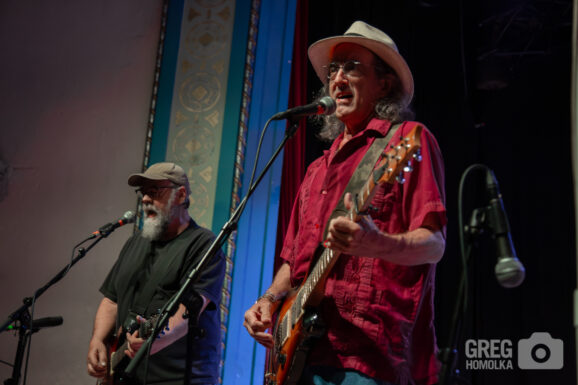Had The Beatles been able to successfully fulfill the vision they originally conceived for the album that was released over a half-century ago as Let It Be, we might not have seen that LP as we now know it.
Fresh off the recording and release of The White Album (a/k/a The Beatles) in late 1968, the foursome reconvened early in the new year to work together in a more straightforward fashion than on that double set and Sergeant Pepper’s Lonely Hearts Club Band of 1967.
Notwithstanding the production of a feature length film (or the idea of a live performance bandied about at various points), the emphasis was on simplicity, the goal to capture the quartet as they played and sang together, without much, if any, subsequent elaboration via overdubbing or effects.
Hindsight of fifty-five years suggests the Beatles would most likely have achieved this goal with the astute guidance of manager Brian Epstein and/or long-time studio producer George Martin. But the former had passed suddenly in August of 1967, leaving the group essentially rudderless, while the latter had been shunted aside during the recording sessions of the previous year, an oversight that unfortunately continued here in favor of then-young engineer Glyn Johns.
The latter–who went on to work with the Rolling Stones, the Who and the Eagles, among others–actually took the initiative of compiling an album from the earliest recordings of sessions begun at Twickenham sound studios, then continued in the basement of the building housing the Apple business offices.
That soon-to-be famous producer’s assemblage of mostly early takes was meant to radiate a spontaneous immediacy (notably, at least two other such collections of his were rejected by the band later on). And in fact, it does, the fourteen tracks (including two takes of “Get Back”) playing like a single protracted moment of collective inspiration.
The informality of the atmosphere and the intimacy of the Liverpudlian’s artistic fraternity becomes enhanced by the dialogue interwoven with songs such as “Two Of Us.” In fact, when playing and singing together, the Beatles clearly transcend the differences afflicting them at the time, musical and otherwise, their musicianly camaraderie augmented in its later stages by keyboardist Billy Preston.
Invited to join in by George when increasing distance between the bandmembers persisted during the sessions, the lads’ long-time friend contributed mightily to the jollity of the now legendary rooftop performance, from which come some of the cuts on the Let It Be as it was eventually released.
Conflicting agendas abound in this sequence of events, but those of future Beatles manager Allen Klein and famed producer Phil Spector take precedence. The latter brings his “Wall of Sound” approach to an ultimately antiseptic patchwork of tracks recorded from January to April of ’69, choices of which he blemishes most egregiously through the overabundance of orchestration he applies to “The Long And Winding Road.”
Even the exuberance of “One After 909” can’t offset that faux pas. One of Lennon and McCartney’s first songwriting collaborations, it’s of the same ebullient tenor as George’s “For You Blue,” where he encourages John’s gleeful slide playing. The latter’s other contributions, such as the wordplay of “I Dig A Pony,” are hardly so significant as his soulful devotional “Don’t Let Me Down.”
With the appropriate mentorship, the grand finale of the Beatles’ discography wouldn’t have ended up the anti-climactic, melodramatic morass of cross-purposes it turned out to be. From the perspective of more than five decades, the release of Abbey Road in autumn of 1969, prior to Let It Be, is just one more disheartening illustration of how far afield the Beatles had gone from the original concept for Get Back.










4 Responses
I bought an early boot leg & although rough, it showed the camaraderie of the band. Long & winding road, across the Universe were better without Spector’s overproduction. It’s a shame what happened to it. Oh well
I like Let it Be without all that Wall of Sound stuff.
Let it be (Naked) is the only way I want to hear this one. Perfection.
The least Beatly album. It’s a collection of parts rather than a summarizing, transcendent whole.